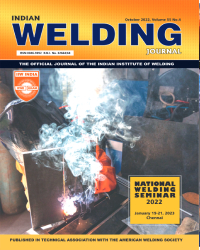The Method of TIG Dressing
Subscribe/Renew Journal
While most steel parent metals have fatigue strengths that nearly correspond to their static strengths, welded joints usually exhibit fatigue strengths that are drastically lower than those of the parent metals. In fact, generally the fatigue strengths of welded joints in high strength steels are the same as those of the same joint type in mild steel. This means that the higher the strength of the parent metal, the more marked will be the reduction of the fatigue strength in the welds. With the recent great advance in the technology of large structures and the accompanying rapid increase in the demand for high tensile steels, the low fatigue strength of welded joints has become a major problem; consequently improvements are urgently required in order to exploit fully the advantages of high tensile steels.
User
Subscription
Login to verify subscription
Font Size
Information

Abstract Views: 301

PDF Views: 4



